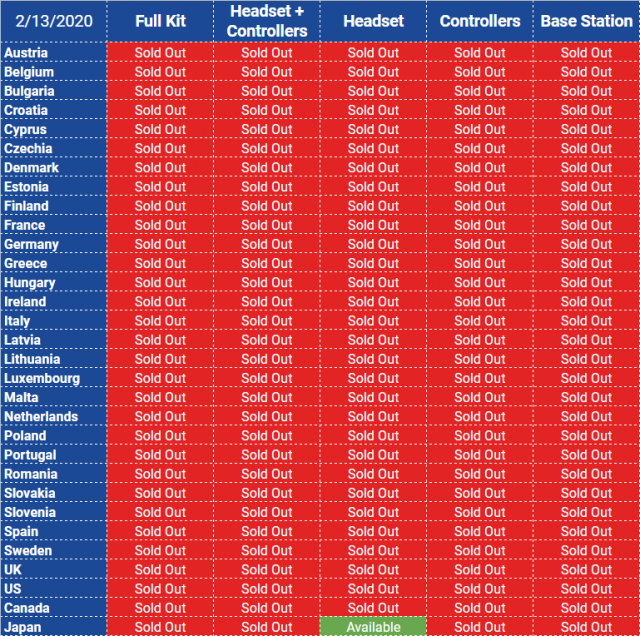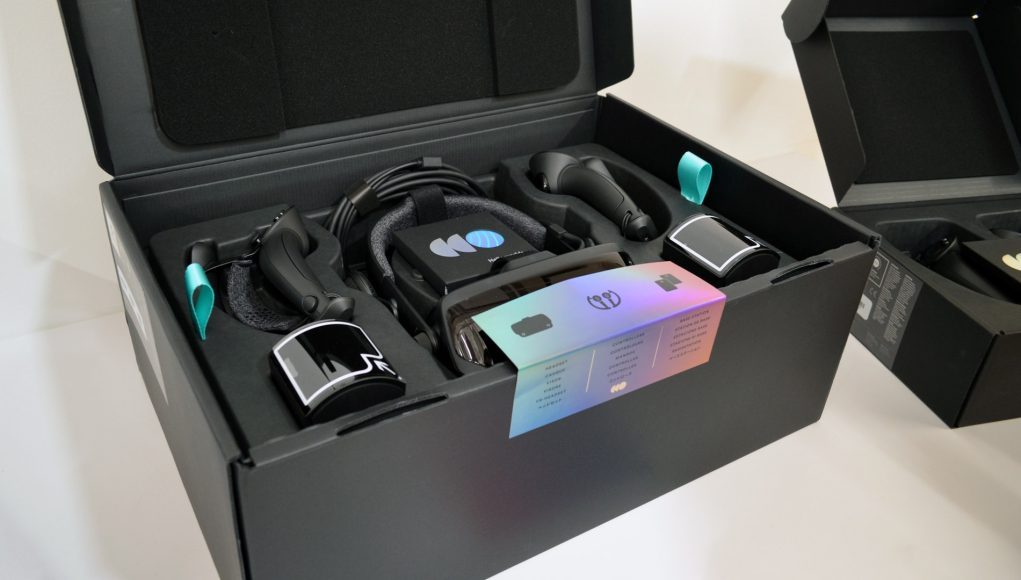Valve’s first flagship VR title, Half-Life: Alyx, is now set to launch on March 23rd but unfortunately the company’s Index VR headset is still just about impossible to buy direct. In the meantime, the shortage has seen secondary markets selling the headset at a 150% price premium.
Valve Index Stock Check
Following up on our global stock check back in January, our latest check of Valve Index stock today shows that things have gone from bad to slightly worse.
There’s 155 ‘region-SKUs’ between the 31 regions where sold and 5 Index SKUs. Of those 155 region-SKUs, only a single one is available (down from two at our last check). That would be the Headset-only package sold in Japan:
 For the last month, Valve’s Index store pages have told customers “we’re busy catching up with demand for Valve Index!” and allowed users to sign up for an email notification when there’s new stock.
For the last month, Valve’s Index store pages have told customers “we’re busy catching up with demand for Valve Index!” and allowed users to sign up for an email notification when there’s new stock.
Where’s the Bottleneck?
While we might expect that Index stock would continue to slowly trickle out of Valve’s manufacturing operation, we haven’t heard any reports of customers being notified of new stock, making it seem like manufacturing may have even been halted entirely.
But why? One thought is that Valve may be revamping its manufacturing line (or even moving it to a larger facility) to support the greater-than-expected demand.
While Oculus said last week that the Coronavirus would make it even harder to buy its Quest headset due to the illness’ impact on its China-based manufacturing operation, Valve has not indicated any impact related to the outbreak. Our understanding is that Valve manufacturers Index in the US, however it’s likely that some of its components are of Chinese origin.
Valve told us last month that it was “working hard to build more units and meet the high demand. We are targeting to be back in stock before Half-Life: Alyx ships.”
Today in a string of tweets about the game’s release date, the very last sentence of the very last tweet read, “we will have more information on upcoming Valve Index availability soon.”
Resale Value as an Indicator of Demand
With the official sales channel completely sold out, high demand means that secondary market sellers are able to increase prices to sell to those willing to pay more than the manufacturer’s suggested retail price (MSRP) in order to secure a scarce item. In competitive marketplaces like Ebay, seeing how much the headset is selling for gives us an idea of Index’s ‘true value’; an economist might say that the price buyers are paying on these secondary markets is a more accurate reflection of Index’s equilibrium price (the point where supply meets demand) than the MSRP under these particular conditions.
Index hardware is commanding somewhere in the neighborhood of a 150% price premium on secondary markets. On Ebay US, completed listings of the Index ‘Full Kit’ ($1,000 MSRP) have sold for an average of $1,500 in the last week, with some selling for as much as $1,935. Amazon has shown similar prices in recent weeks, but only shows offers and not completed transactions.







